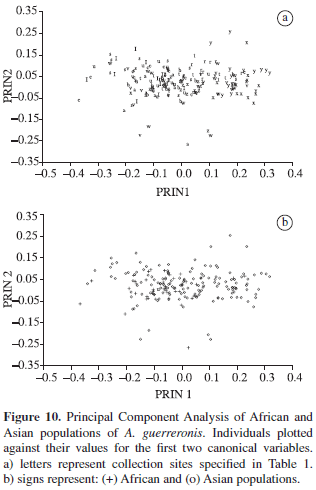The coconut mite, Aceria guerreronis Keifer, has become one of the most important pests of coconut in the Americas and Africa and recently in Southeast Asia. Despite the great economic importance of this mite, there is a lack of information on its origin and invasion history that are important to guide the search of biological control agents as well as the adoption of quarantine procedures. This study evaluates morphometric variation among A. guerreronis populations throughout its occurrence area, relates this variation with historical sequence of records, looking for information on its biogeography. Samples of 27 populations from the Americas, Africa and Asia were analysed using Principal Component Analysis and Canonical Discriminant Analysis. Results showed significant morphometric variability of A. uerreronis throughout its distribution area, with a high variability among American populations and otherwise a high similarity among African and Asian populations. The geographic pattern of variation of mite populations observed supports the hypothesis that A. guerreronis originated in the Americas and was introduced into Africa and Asia. Some inferences related to taxonomy of Eriophyoidea mites were included.
principal component analysis; canonical discriminant analysis; exotic invasive species; Cocos nucifera; biogeography














